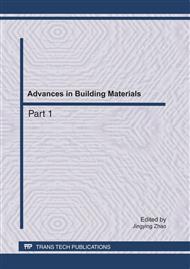p.1257
p.1261
p.1265
p.1270
p.1277
p.1282
p.1287
p.1292
p.1297
Thermodynamic Dissolution Model of Limestone and Dolomite and Their Geotechnical Engineering Signification
Abstract:
The dissolution of limestone and dolomite is simulated by experiments. The thermodynamic equations are established to study quantitatively the dissolution under the kind of three temperature and pressure conditions, namely 348.15K and 20MPa, 373.15K and 25MPa, 403.15K and 30MPa. Dissolution of the dolomite is much easier and formed porosities or holes than the limestone is .The porosities and holes lead to deposition of oil and natural gas. The Geotechnical Engineering signification of the study is that geological conditions should be considered for the location of new city, highway, railway, tunnel, and so on, to avoid the risk of Geotechnical Engineering disasters.
Info:
Periodical:
Pages:
1277-1281
Citation:
Online since:
May 2011
Authors:
Price:
Сopyright:
© 2011 Trans Tech Publications Ltd. All Rights Reserved
Share:
Citation:


